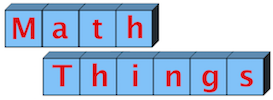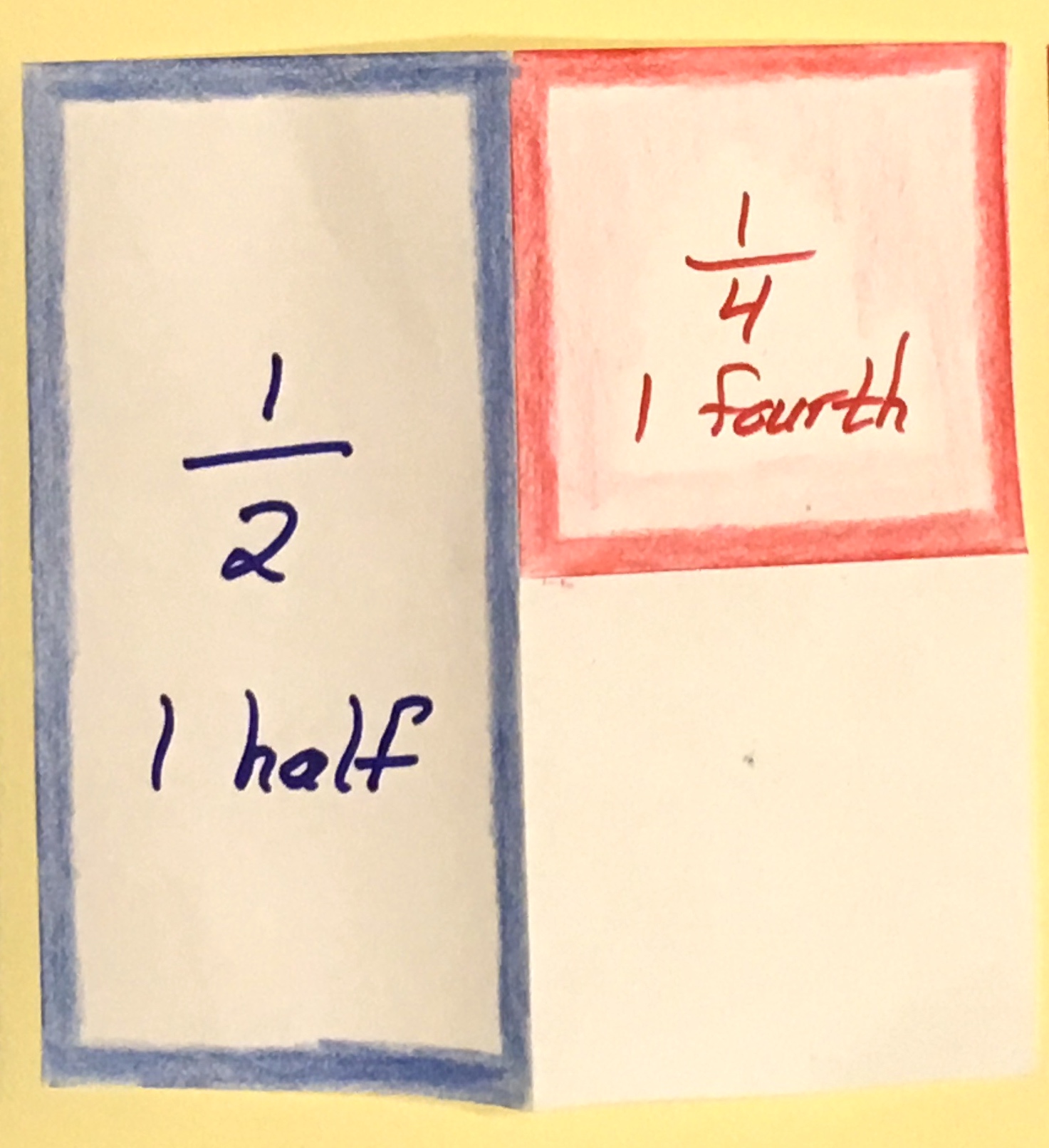These cards allow Kindergarteners to tile anything from a 6-inch square to a 6-foot table. Later, as 2nd or 3rd Graders, they can use the same cards to create, identify, and compose fractions, and find equal fractions. I've used these cards in conjunction with paper folding to introduce fractions for almost 30 years. Now I bring them into enthusiastic K and Grade 1 students' classrooms to use as puzzle pieces.
I am selling kits of these cards, along with the appropriate lessons, on Math Things now. The cards are cut from 6-ply Railroad Board, which is similar to an extra thick poster board, You can find a description of the material at the Dick Blick Art Supply site (https://www.dickblick.com/products/pacon-railroad-board/ ) or at Amazon. It’s durable stuff; I travel from classroom to classroom with sets of cards some of which have been in use for 10 years.
Two or more teachers, one at K-1 and one at 2-3, can share a single kit and get a lot of use out of it at different parts of the school year. Here are some examples of how they can be used.
Kindergarten & Grade 1
Use shapes to create larger composite shapes, and still larger composite shapes.
Practice matching shapes to open spaces.
Tile both small and large spaces.
Grades 2 and 3
Create unit fractions by folding a unit square.
Identify fractions corresponding to those folded regions.
Name unit and non-unit fractions.
Compare different fractions by composing and comparing areas corresponding to each.
Generate equivalent fractions by folding, and identify the equations which describe the change produced by folding.
More Information
Here is a more comprehensive summary of what you can do with these materials, as well as a list of the kit's materials and the Common Core Standards addressed in them. The Standards are also listed below.
Here is the Table of Contents listing all digital files included with the free Print Materials download. There are 10 pages of student activities for K-1, and 19 pages for Grades 2-3.
Ordering and Pricing
The cost of the Tiling and Partitioning Kit is $50. This includes paper copies of all printed materials and a free download of all those files in PDF. Smart Notebook files are also included for all the student activity pages.
You can download the print materials after checkout of the Tiling and Partitioning Cards. You will see a Discount Code on the order page. After checking out, go to the Print Materials Download Page, add the downloads to your cart, and enter the Discount Code during checkout. The $10 cost of the download will be deducted from the order total (making the order free). After completing checkout, you will receive a download link that is active for 24 hours.
Payments are accepted either by credit card or with PayPal. All shipping is free via US Postal Service ground delivery.
Common Core Standards
The cards can be used to develop skills and explore concepts addressed in all these standards:
K.G.6: Compose simple shapes to form larger shapes. For example, “Can you join these two triangles with full sides touching to make a rectangle?”
1.G.2: Compose two-dimensional shapes... to create a composite shape, and compose new shapes from the composite shape.
1.G.3: Partition circles and rectangles into two and four equal shares, describe the shares using the words halves, fourths, and quarters, and use the phrases half of, fourth of, and quarter of. Describe the whole as two of, or four of the shares. Understand for these examples that decomposing into more equal shares creates smaller shares.
2.G.3: Partition circles and rectangles into two, three, or four equal shares, describe the shares using the words halves, thirds, ... Recognize that equal shares of identical wholes need not have the same shape....
3.NF.1: Understand a fraction 1/b as the quantity formed by 1 part when a whole is partitioned into b equal parts;...
3.NF.3: Explain equivalence of fractions...and compare fractions by reasoning about their size...
3.G.2: Partition shapes into parts with equal areas. Express the area of each part as a unit fraction of the whole...











